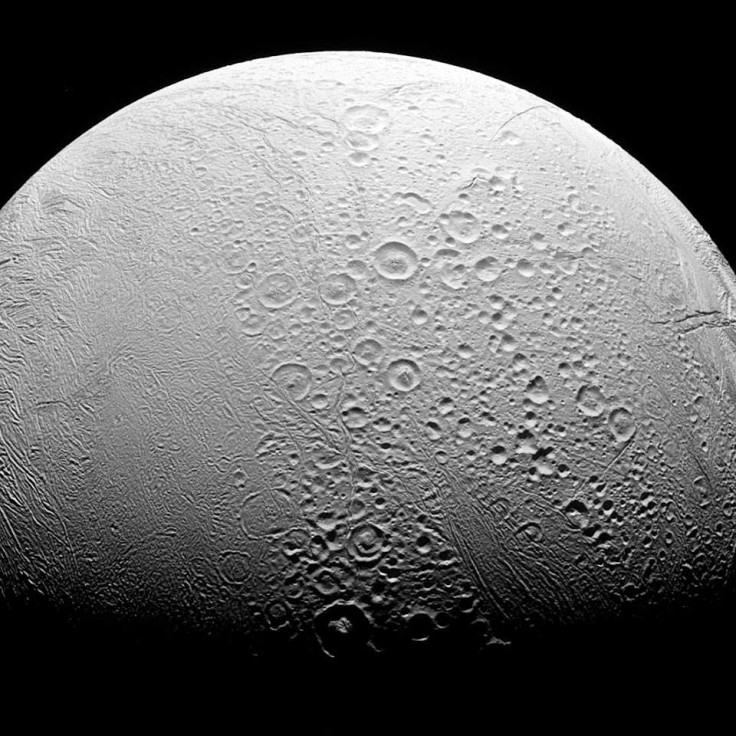Microscopic Organic Life Forms Likely Exist On The Ice Moon Enceladus

Saturn's icy moon, Enceladus, might be more hospitable to life than originally thought.
The life we're talking about here is microbial life such as bacteria but it's life nonetheless. And finding these forms of life on another planetary body in our solar system for the first time would be a landmark moment in space exploration and the search for extraterrestrial life.
As confirmed by the Cassini spacecraft in 2005, Enceladus is encrusted completely in fresh ice, making it one of the most reflective bodies of the Solar System. But Saturn’s sixth largest moon is most notable for its more than 100 cryovolcanoes in the south pole that hurl geyser-like jets of water vapor, molecular hydrogen, other volatiles and solid material (such as sodium chloride crystals and ice particles) into space.
Some of the water vapor falls back as snow, the rest escapes and supplies most of the material comprising Saturn's E ring. In 2014, NASA reported Cassini had found evidence for a large south polar subsurface ocean of liquid water with a thickness of around 10 km.
This stunning piece of news was topped in June 2018 when NASA scientists reported the detection of complex macromolecular organics on Enceladus' jet plumes as sampled by Cassini. Organic molecules are the basis for life in our Universe and their presence on Enceladus means that primitive microbial life must exist in the moon’s surface and subsurface oceans.
Now, new analysis of this material suggests an environment where life could flourish inside or on Enceladus. The water plumes are chemically different from the ocean beneath because they were altered by their 1,300 km/h eruption into space, said a research team led by Lucas Fifer of the University of Washington.
This could only mean the surface of the moon could be much more hospitable to life than previously believed.
“Those high levels of carbon dioxide also imply a lower and more Earthlike pH level in the ocean of Enceladus than previous studies have shown,” said Fifer. “This bodes well for possible life.”
Fifer noted most life on Earth functions best living in or consuming water with near-neutral pH. Similar conditions on Enceladus could be encouraging, he said.
These conditions also make it much easier to compare the strange ocean world on Enceladus to an environment that is more familiar, like that of Earth’s.
Fifer and his team believe Enceladus’ high concentration of ammonium could also offer fuel for life.
“Though the high concentrations of gases might indicate a lack of living organisms to consume it all that does not necessarily mean Enceladus is devoid of life,” Fifer said. “It might mean microbes just aren’t abundant enough to consume all the available chemical energy.”

Published by Medicaldaily.com



























